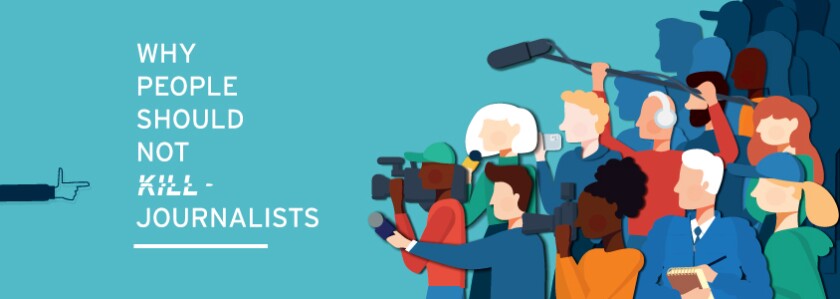
“That’s fake news.”
“The press is the enemy.”
“Journalists should be hung.”
Though disturbing, these phrases have become all-too-common in our society. Those who don’t agree with a statement or a media outlet call it “fake news.” Those who despise the press — including some of our nation’s leaders — call it the “enemy.” And even some think to the extreme: that journalists should be killed.
We live in a society that has become increasingly conflicted and divided. Misinformation spreads like wildfire through advancements in technology and social media. It’s far too easy to fall into the trap of not thinking twice about the veracity of a post before sharing it online.
The world needs to better understand news and how it works. We tend to seek out sources that merely reinforce what we believe rather than looking at issues in an objective way. How do we break out of this pattern?
Journalism is an essential part of democracy; however, the degrading trust in American journalism is weakening our democracy. The 2021 Edelman Trust Barometer found that more than half — 59 percent — of people globally agree that journalists are “purposely trying to mislead people by saying things they know are false or gross exaggerations.” Our team at the BYU Journalism Research and Innovation Project (JRIP) is optimistic that trust in journalism can be rebuilt through education.

Our project’s mission is to “explain the current state of journalism, explore the future of the industry, and rebuild the public’s trust in journalism.” In order to achieve these goals, we are working to create a series of written modules that promote journalism and information literacy. Our plan is to make these modules available to BYU faculty for use in classroom settings, meetings, etc. We plan to publish these modules on this website by the end of Winter Semester 2021, though they will likely be continuously updated with videos and other multimedia elements as those are completed.

These modules — which we anticipate will soon be published online — include the following:
- Why People Should Not Kill Journalists
- The Who of Journalism
- The What of Journalism
- The When of Journalism
- The Where of Journalism
- The Why of Journalism
- The How of Journalism
- Journalism, Revenue Models, and Social Media Algorithms
- The Relationship Between Journalism and Faith
- The Future of Journalism

The first module, “Why People Should Not Kill Journalists,” addresses the devastating issue of attacks on journalists. Journalists are often criticized for their work, and, in extreme cases, killed by people who dislike or feel threatened by their coverage. Journalists do make mistakes, but nothing justifies physical violence. This also module details statistics about journalist killings, including the horrific fact that 90 percent of journalist murders are unresolved.
With the notion of “anyone can be a journalist” and the simplicity of snapping a photo and sharing it online, our second module, “The Who of Journalism,” aims to explain who is a journalist. The American Press Institute (API) defines a journalist as one who “places the public good above all else and uses certain methods — the foundation of which is a discipline of verification — to gather and assess what he or she finds.” Journalists seek to inform. Above all, they are not evil or “enemies of the people.” In this module, we strive to strongly convey that journalists are humans — they are local community members — and should be treated as such. The purpose of this module is to humanize, rather than dehumanize, journalists.
The other modules go into depth on topics like what journalism is, the history of journalism, the purpose for and importance of journalism, and what the future of journalism looks like. These modules are meant to be interactive — they will include visuals like graphics, videos and other multimedia elements.
Our JRIP team recently met with the College of Humanities to share our goals and progress on the project and discuss potential collaborations. We are looking forward to meeting with other faculty members and students to share our findings and ideas for media literacy education.